
Medium Sculptures
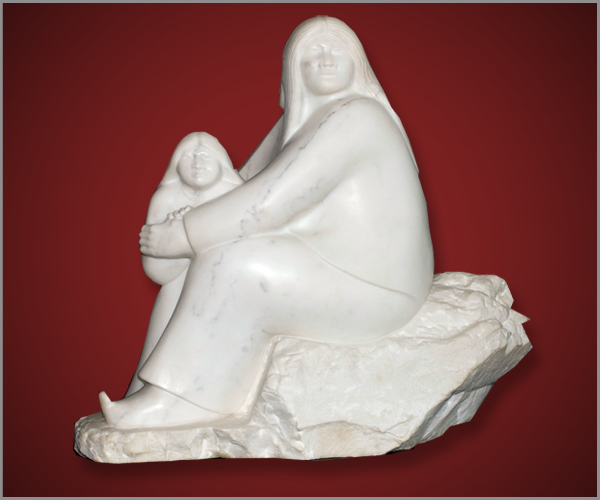
Allan Houser
Carrara marble, 1991
A Safe Return
Allan Houser consistently expressed his respect and admiration for women and for the sense of place or home that they often provided. This marble sculpture conveys both elegance and quiet comfort in its ability to capture a moment between mother and daughter. Another expression of Houser’s artistic genius was his ability to sculpt and use marble, stone, bronze, steel, plaster, and wood for his sculptures.
“I have the feeling that the image actually emerges from the stone. I can almost see it in that particular stone, as if it’s lying in there, trying to get out.” — Allan Houser Loan courtesy of the Allan Houser Foundation
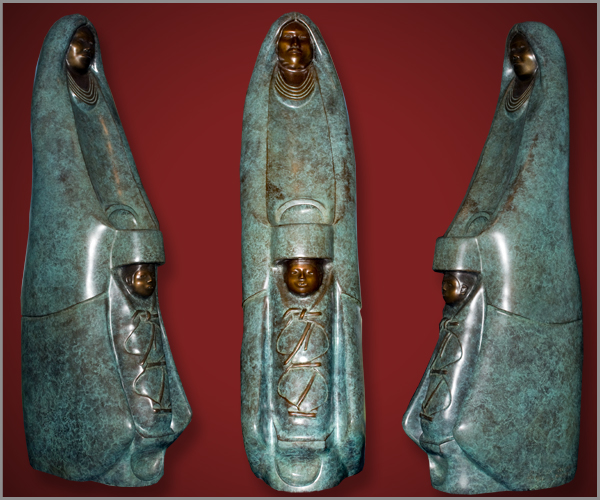
Allan Houser
bronze, 1994
Apache Cradleboard
In this flowing depiction of a mother and child, Houser again expresses his strong connection and respect for women and their protective tie to children. Loan courtesy of the Allan Houser Foundation
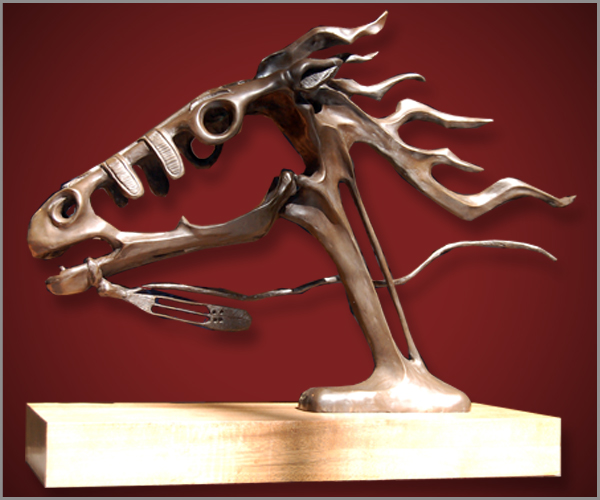
Allan Houser
bronze, 1978
War Pony

Through his minimalist approach, Houser captures the fierce nature of the horse as an instrument of war. Loan courtesy of the Allan Houser Foundation

Allan Houser
bronze, 1990
Spirit House

With Spirit House, Houser gives form to the concepts of both mobility and sense of place. By using two independent sheets of brass and interlocking them, Houser created a free-flowing design that suggests a place to live—both mobility and sense of place or home. Loan courtesy of the Allan Houser Foundation

Phillip M. Haozous
clay and bronze, 2008
Ave-Hoo

“The name Ave-Hoo is my own phonetic spelling of the way ‘owl’ is pronounced in Spanish. My mother, Mrs. Anna Marie Houser, told me that the village of Abiquiu in northern New Mexico was once known as Ave-Hoo, the bird that says ‘Hoo!’” — Phillip M. Haozous Loan courtesy of Phillip M. Haozous
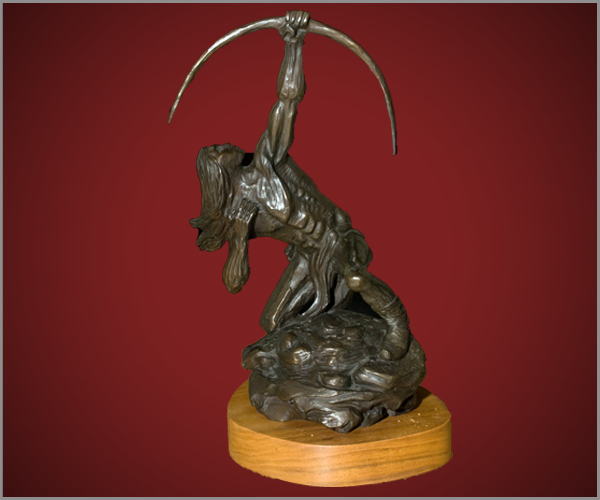
Allan Houser
bronze, no date
Sacred Rain Arrow II
This small bronze is the further development of the first Sacred Rain Arrow sculpture created in ebony by Allan Houser. A story about an Apache man shooting an arrow into the air was placed on Oklahoma state license plates at one time.
Loan courtesy of the Allan Houser Foundation
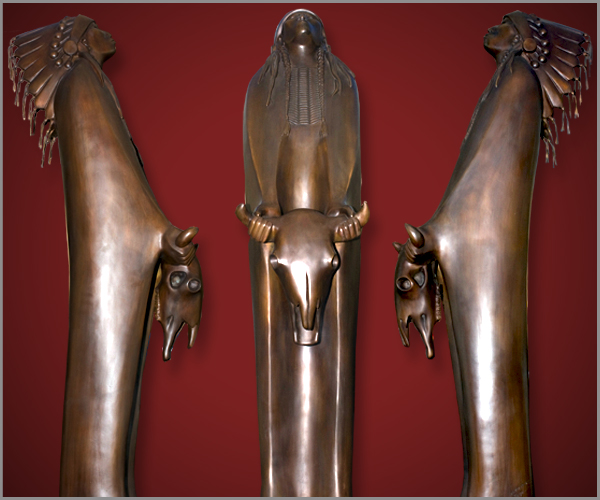
Allan Houser
bronze, 1990
Lament

Much of Houser’s work tells stories or conveys messages. His work includes depictions not only of his heritage, Warm Springs Chiricahua Apache, but of other tribes as well. In this particular piece, Houser has depicted a Plains Indian medicine man, as indicated by his war bonnet, holding a bison skull, in prayer.
Loan courtesy of the Allan Houser Foundation

Allan Houser
bronze, 1985
The Future

Family is a recurring theme in Allan Houser’s art. This sculpture depicts a mother, father, and child with a sense of motion added by their posture and the walking stick. From this small bronze, a monumental 14-foot tall sculpture was later cast. Loan courtesy of the Allan Houser Foundation
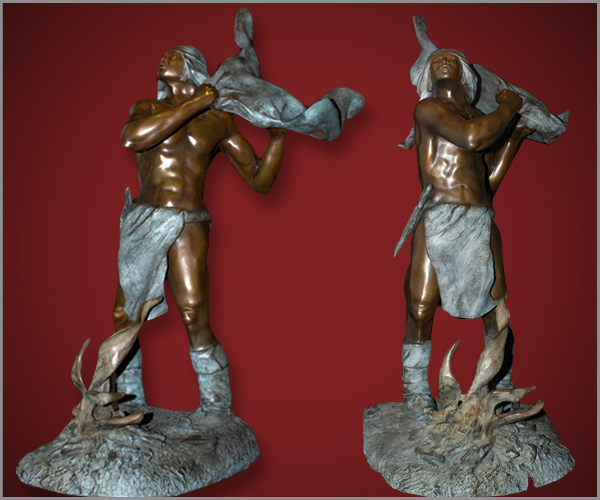
Allan Houser
bronze, 1993
Smoke Signals

Allan Houser created and cast this sculpture in 1993 as an entry in the Prix de West art show and competition at the National Cowboy and Western Heritage Museum. Smoke Signals won the Purchase Prize with its engaging narrative style and elegance of form. Loan courtesy of the Allan Houser Foundation
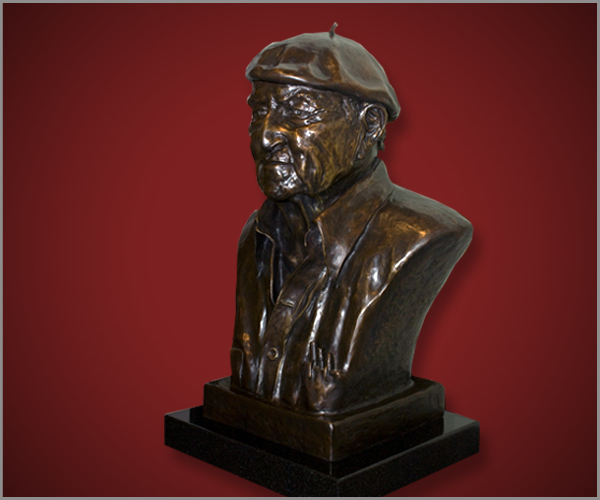
Phillip M. Haozous
bronze, 2001
Bust of Allan Houser

A large exhibit of Allan Houser’s sculptures was shown at the 2002 Winter Olympics. This bust representing his father was created by Phillip Haozous and shown at the 2002 Winter Olympics. Loan courtesy of the Allan Houser Foundation
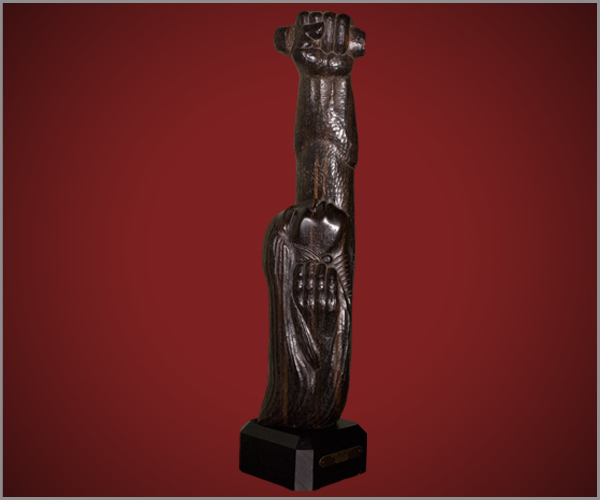
Allan Houser
ebony (wood), 1968
Sacred Rain Arrow

This amazing sculpture was carved from a single block of ebony wood. Created in Houser’s studio at the Institute of American Indian Arts in Santa Fe, it won the Grand Prize at the Philbrook Museum of Art in Tulsa in 1968. Loan courtesy of the Allan Houser Foundation

Allan Houser
bronze, 1989
Dawn

This modernistic representation of a reclining female figure illustrates Houser’s strong appreciation and respect for the female form and provides an example of his skill and command of multiple artistic styles and ability to express his art and narrative stories in a wide range of media. Loan courtesy of the Allan Houser Foundation
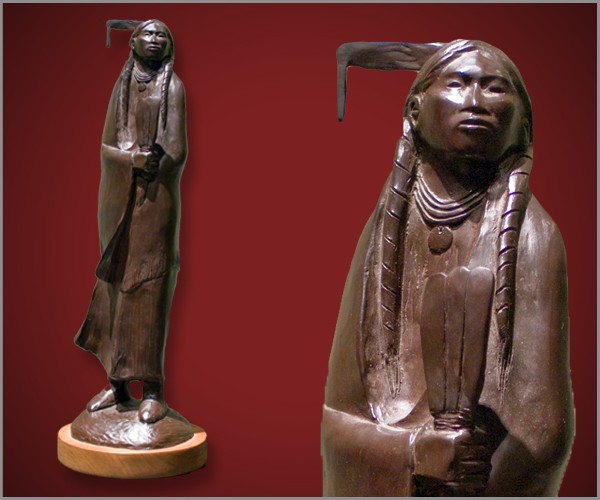
Allan Houser
bronze, 1988
Woman of the Plains
This maquette is the original concept for the monumental piece that Allan created as a special commission that now stands on the south steps of the Oklahoma State Capitol Building. The larger monumental piece is known as As Long As the Waters Flow, 1989. Allan changed the initial design, removing the single eagle feather from the woman’s hair, and renamed the piece for the monumental version. Loan courtesy of Betty and Norris Price

Phillip M. Haozous
bronze, 2005
Apache Clowns II

Humor is an essential part of Apache culture. This piece tells Phillip’s interpretation of a scene he witnessed at a dance where he saw a young boy striving to learn the dance and find his place as a young Apache man. Loan courtesy of Phillip M. Haozous

Phillip M. Haozous
bronze, 2006
Free Spirit

“My brother, Roy, has spent his life seeking new adventures—never staying in one place too long. The colorful stories of his travels intrigued me as a young man and continue to do so to this day. Roy is a true Free Spirit.” — Phillip M. Haozous Loan courtesy of Phillip M. Haozous

Phillip M. Haozous
bronze, 2004
Apache Humor
“At our annual Apache gathering in Oklahoma, I observed a humorous interlude between the singers and a new clown. It must have been the clown’s first dance...” — Phillip M. Haozous.
The older men sitting on the bench are the singers. The two clowns are Apache boys and are dressed according to custom. In the Apache Mountain Spirit dance, the mountain spirits represent stability and foundation, while the clown represents the unpredictable. A person must have strength and foundation to deal with the unpredictable in life, and therefore have balance.
Loan courtesy of Phillip M. Haozous

Allan Houser
bronze, 1980
Water Spirit Bird

This bronze depicts the Water Bird, an iconographic symbol associated with the Native American Church. The Native American Church has roots in Oklahoma dating back to the 1880s, and blends traditional Native religious concepts and Christian theology. Peyote meetings consist of an all-night ceremony usually held in a tipi or roundhouse, depending on the tribe, with an altar and articles arranged in a specific manner. At midnight, the participants are allowed to drink water. Water is associated with life and healing. Oftentimes, fans are made from the water bird’s tail feathers, which are used for healing. Loan courtesy of the Allan Houser Foundation
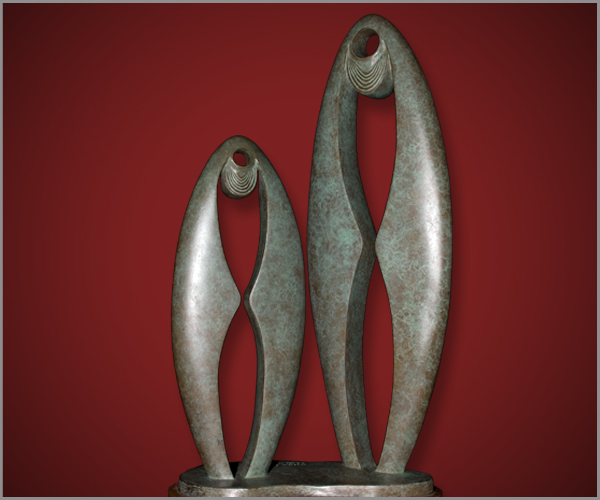
Allan Houser
bronze, 1992
We’re Here

This piece is one of Houser’s water series sculptures, essentially vertical forms with negative space and simplified details. On this particular piece, the only noticeable details are the heshi necklaces that adorn the necks of the two women. The negative space created by the elongated forms of the women is a symbol of fertility. Fertility fused with the life-nurturing water is portrayed elegantly and poignantly in this piece. Loan courtesy of the Allan Houser Foundation

